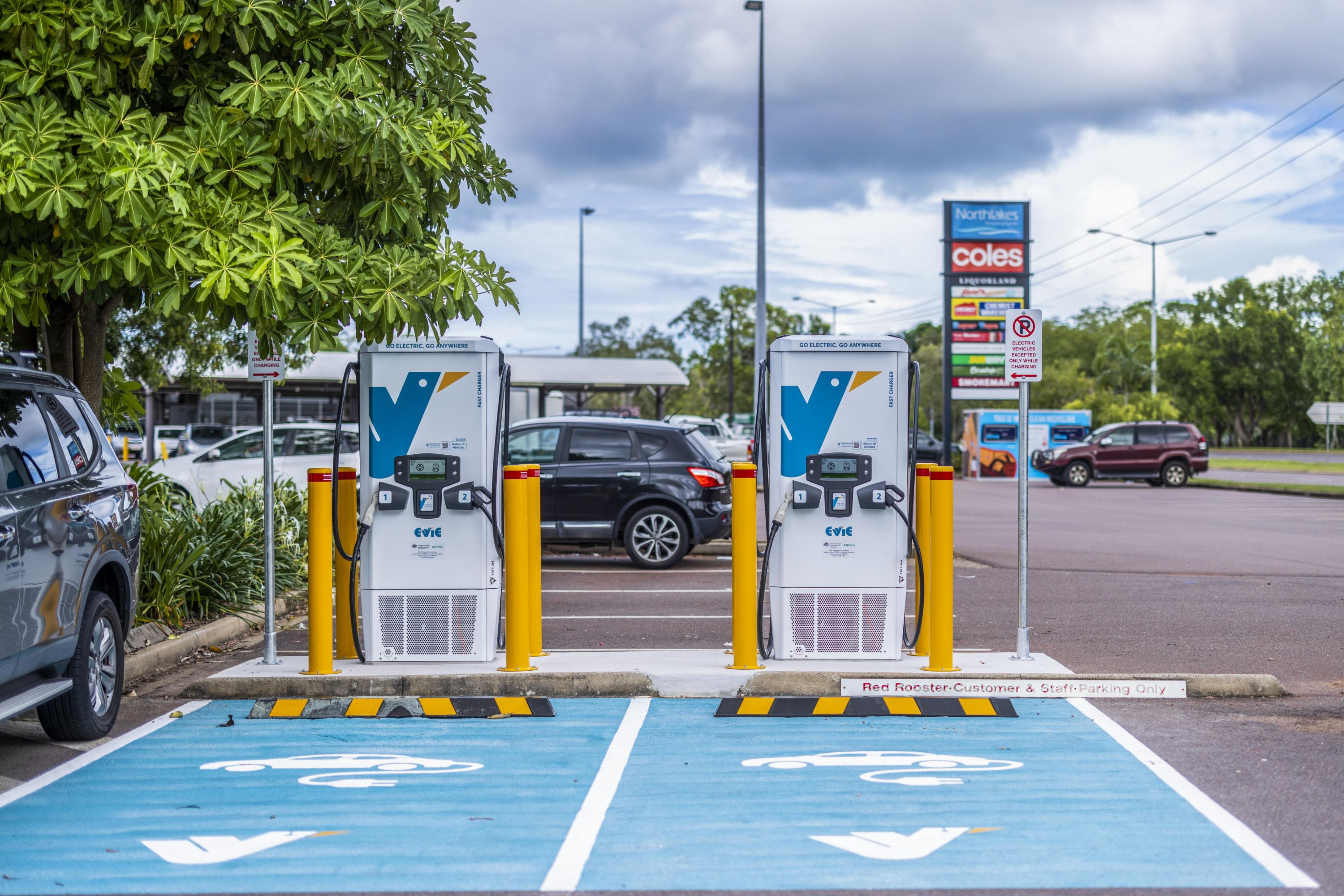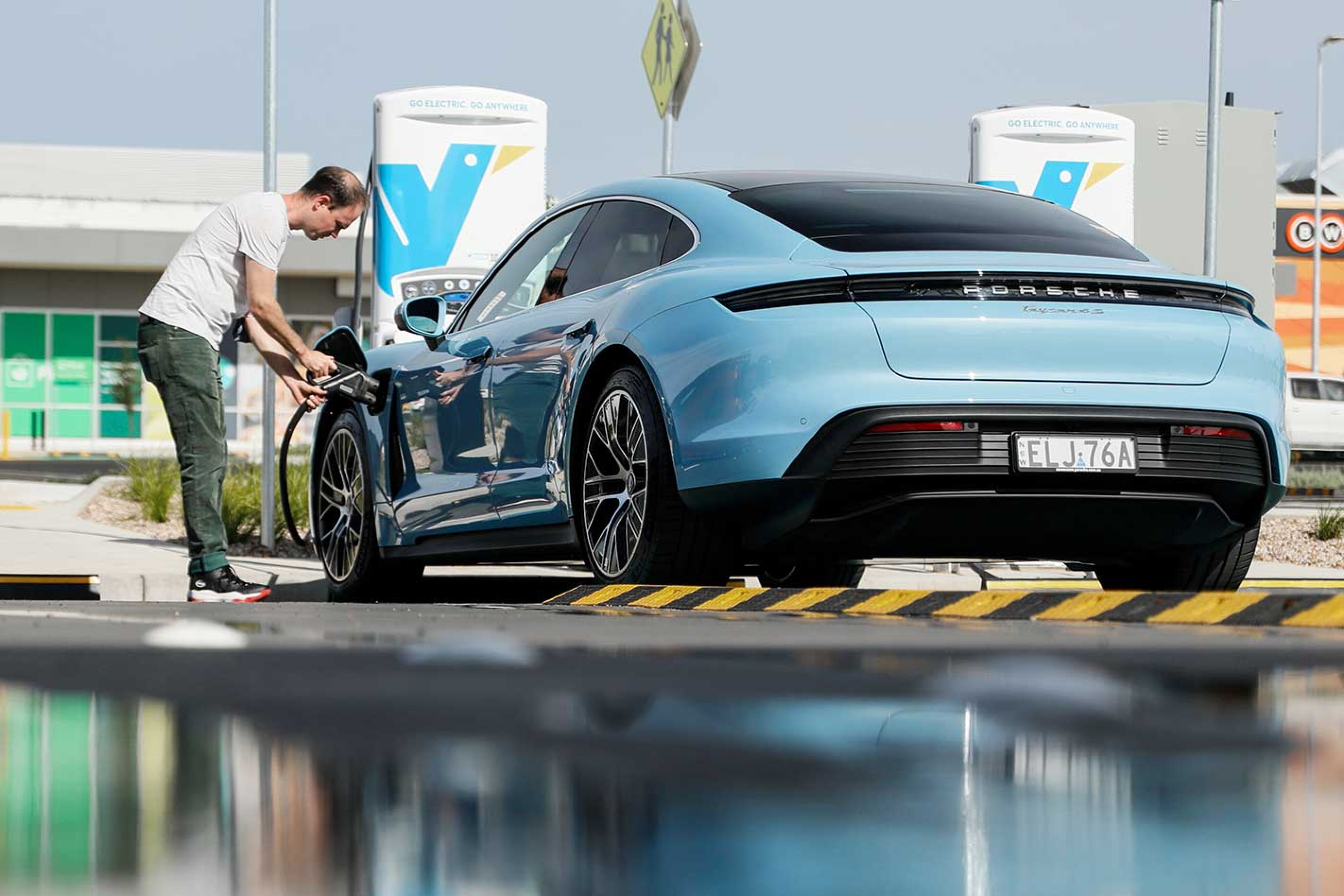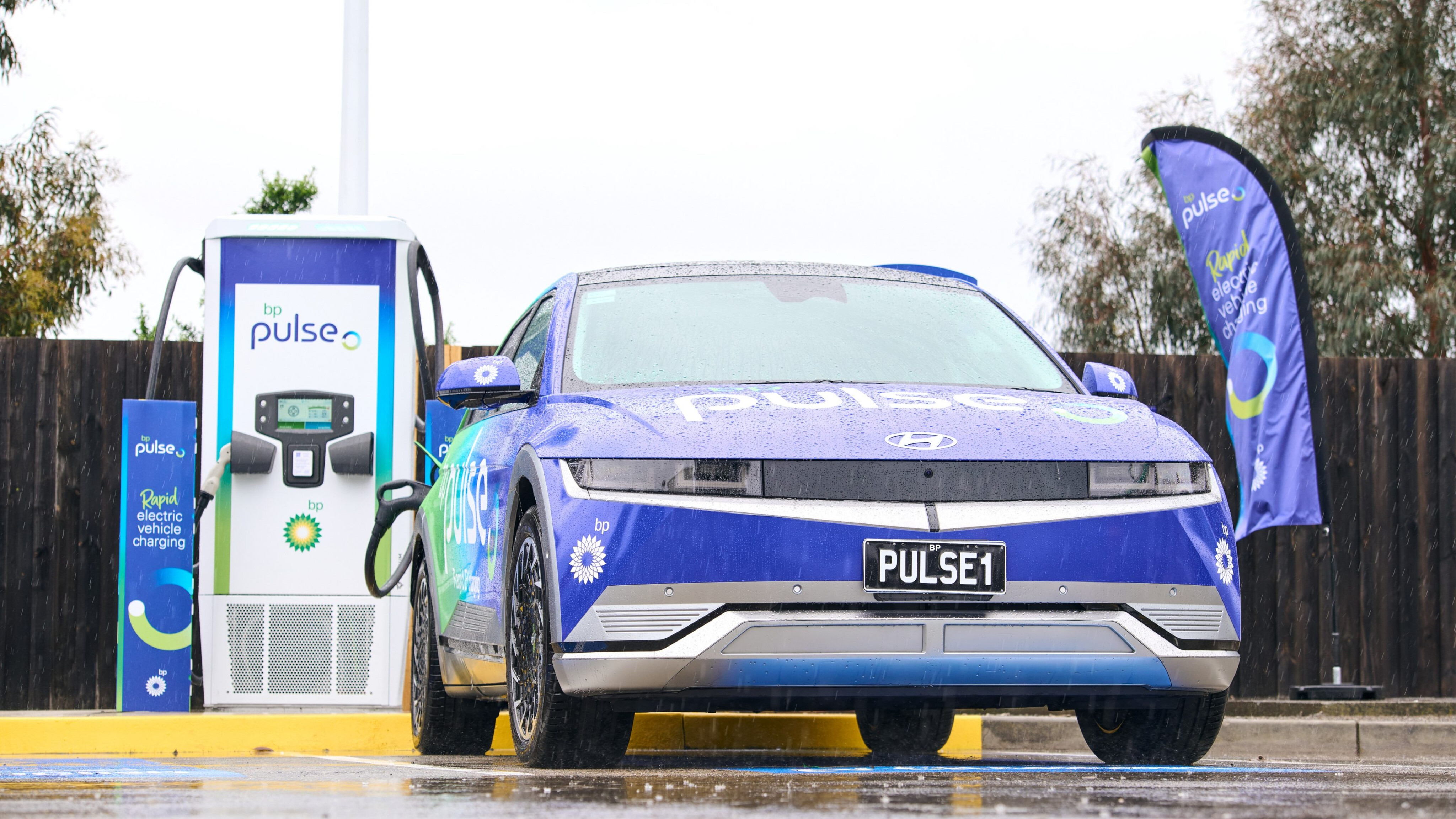
Snapshot
- Most fast charging stations in Australia are 50kW DC
- Grid, cost, time, location are key limitations
- Slow home charging is the best way to own an EV
Public electric vehicle charging infrastructure is quickly growing in Australia, yet most can’t satisfy the full capabilities of new models.
According to public EV charging finder PlugShare [↗], Australia is dominated by around 270 DC fast charging stations that output up to 50 kilowatt (kW).
Depending on the model, a 50kW DC unit generally takes about one hour to charge from 10 to 80 per cent – sufficient time if you’re on a rest break. However, the majority of new EV models can accept much quicker charge rate.
For example, even the budget-friendly BYD Dolphin Dynamic hatch can input up to 60kW DC, the base Tesla Model 3 RWD sedan has peak 170kW DC capability, and the Kia EV6 crossover can reach up to 240kW DC.
Note that car brands claim peak charging speeds, which is the maximum an EV can take under optimum conditions. The vehicle will throttle speeds depending on factors, such as higher battery percentage and battery temperature.
JUMP AHEAD

👀 Why 50kW DC?
While car brands are able to boast of fast charging capabilities, most public charging stations in Australia simply can’t output as much energy. There's a reason, however.
Speaking with Wheels Media, Delta Electronics Australia and New Zealand manager Tom Hew said the 50kW approach provides the best balance of charging speed and matching each location’s electricity grid capabilities.
“We know the grid is struggling to be able to take chargers at a lot of locations, so they may not necessarily be able to have something higher than 50 kilowatts, without including a battery storage solution for example,” Hew said.
“We see it as the sweet spot for what a lot of places can install… anything higher could cost significantly more to upgrade the mains in order to support it. It also takes a very long time to wait for the supply authorities to be able to actually plan and upgrade it accordingly.”
"We see it as the sweet spot ... they may not be able to have something higher than 50 kilowatts"
Some 75kW to 150kW DC public stations have also emerged and are capable of power sharing (charging two vehicles at once via two plugs), but charging speeds slow to a 50:25 kW DC split for the former, despite users paying for the same rate.
Ultra-rapid 350kW stations owned by Chargefox and Evie Networks are mainly found beside highways, while Tesla has only offered 150kW (V2) and 250kW (V3) Superchargers and don’t provide power sharing functionality. Of course, they often come at a higher price.

Hew says Delta will introduce high-powered 350kW DC units next year, but like the company's rivals, he agrees ultra-rapid charging stalls are more suitable alongside highways – rather than at inner-urban public and office locations, where 50kW DC is “more than sufficient”.
“It depends on the application, so where are they [charge point operators are] actually installing it, for what purpose and looking at the behaviour of the user at that particular location,” Hew told WhichCar.
The charging equipment manufacturer claims its new DC Wallbox 50kW can further reduce installation costs, with a small footprint, power sharing capability, and grid management software. Delta says it will initially be installed at car dealerships and for government EV fleets.
🔋 A moot point?
Fast charging capabilities may be attractive, but they’re really only needed if owners are hurrying through a long trip or can’t access a plug at home for overnight charging.
The ideal method is slow AC charging at home or work, where the vehicle refills when it’s parked and unused, rather than deliberately stopping beside the road – akin to a traditional petrol or diesel car.
Home charging is the cheapest way to own an EV, and AC power is generally better for the longevity of batteries.
As public fast charging infrastructure quickly grows, more stalls from different manufacturers and speed outputs are being installed with improved reliability.
However, being hit with a slowed-down charging session – despite paying the same price – simply because another EV plugged in on the same station (if compatible with power sharing) is an emerging and frustrating issue.
🤔 Is it time to make the electric switch?
EVs are not for everyone (for now), but they are right for most.
Charger reliability, battery longevity, and price remain key perceived issues. For more, check out our /Electric hub guides below.


COMMENTS